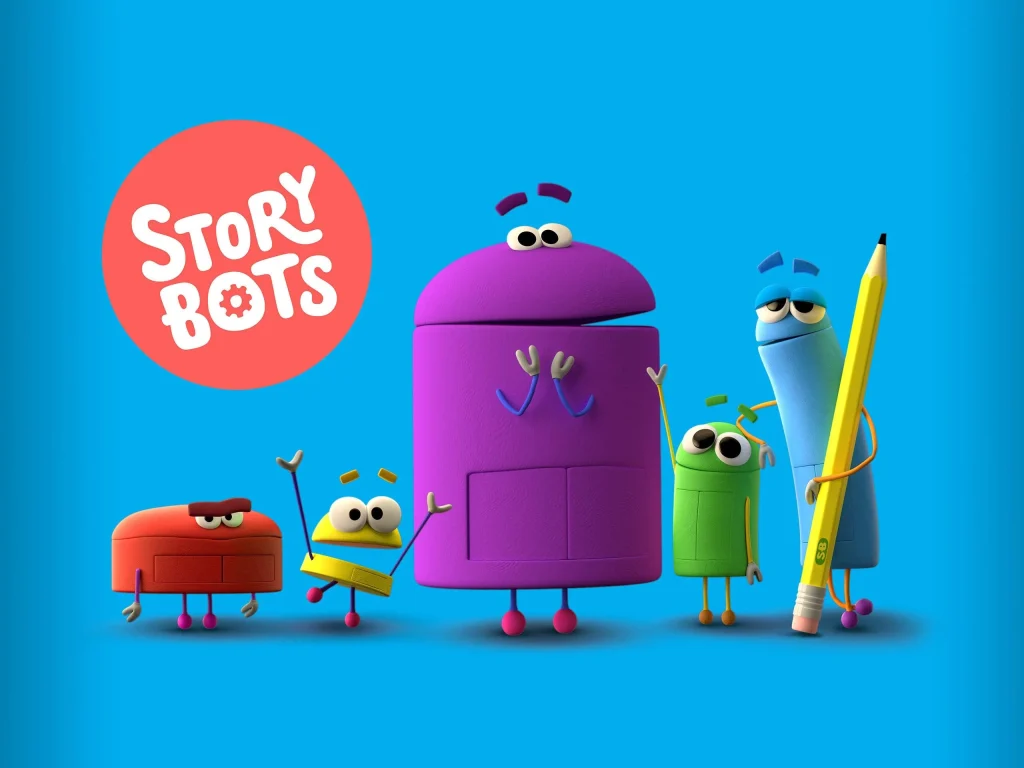Best Educational TV Shows for Kids Ages 2-5 That Make Learning Fun
Affiliate Disclosure: This content may contain affiliate links. We may earn a small commission at no extra cost to you.
Educational TV shows for preschoolers aren’t just fun—they’re carefully designed tools that support early learning during a critical stage of development. For kids ages 2 to 5, the right shows can help build foundational skills like recognizing letters and numbers, understanding emotions, following routines, and developing empathy—all through colorful characters, music, and simple storytelling.

At this age, young children learn best through repetition, play, and interaction. Many high-quality shows are built around these principles, using songs, predictable patterns, and direct questions to encourage kids to participate out loud. Whether it’s learning the alphabet with catchy tunes or identifying feelings through relatable situations, these shows align with developmental milestones and help prepare kids for preschool or kindergarten.
For parents looking to balance screen time with enrichment, educational shows offer a smart and age-appropriate option. Co-viewing can make the experience even more impactful—sing along, talk about what’s happening, or act out scenes together. When used intentionally, these shows support early language development, emotional awareness, and curiosity in a fun and engaging way.
These shows also cater to a range of learning styles. Visual learners are drawn to bright animations and expressive characters, while auditory learners engage with songs, rhymes, and repetitive language. Many programs also incorporate movement, encouraging children to dance, clap, or respond out loud—helping turn passive viewing into an active experience that reinforces early learning through physical interaction.
Importantly, the best educational shows for this age group are created with input from child development experts, ensuring that the pacing, language, and themes are appropriate for preschoolers. Topics are introduced gently and reinforced consistently, whether it’s sharing, brushing teeth, identifying shapes, or understanding feelings. These simple concepts are the building blocks for school readiness and lifelong learning.
Because children at this age thrive on routine, watching the same show repeatedly isn’t a bad thing—it actually helps solidify learning. Recognizable characters and familiar formats make it easier for young viewers to anticipate what comes next and build confidence in their understanding. When chosen mindfully, educational TV shows for ages 2–5 can do more than entertain. They can support emotional development, foster language growth, and encourage curiosity about the world. Whether it’s a few minutes after lunch or part of a wind-down bedtime routine, these programs can be a valuable part of your preschooler’s day.
Have you seen our book lists? See parent approved recommendations for kids of all ages. Popular Kids Books
Here is a great resource for discovering digital editions of popular books for kids of all ages. Student Library

1
Team Umizoomi
296
41
Elinor Wonders Why encourages curiosity and observation as Elinor and her friends explore how the natural world works. Each episode answers a question through investigation, discussion, and a little music. It’s great for budding scientists.
Why it works: Encourages asking questions, observation, and logical thinking
Educational focus: Inquiry-based science, nature, problem-solving
Good to know: Focuses on how kids can learn by noticing the world around them
Why it works: Encourages asking questions, observation, and logical thinking
Educational focus: Inquiry-based science, nature, problem-solving
Good to know: Focuses on how kids can learn by noticing the world around them

2
Peg + Cat
286
35
Word Party features adorable baby animals who teach vocabulary, emotions, and social behavior through songs and play. It’s a great option for toddlers who are learning to talk and interact with others.
Why it works: Repetitive language use and music enhance vocabulary retention
Educational focus: Language development, emotions, sharing
Good to know: Short episodes designed for ages 1–3
Why it works: Repetitive language use and music enhance vocabulary retention
Educational focus: Language development, emotions, sharing
Good to know: Short episodes designed for ages 1–3

3
WordWorld
266
31
Dino Dana is a mix of live-action and CGI where Dana, a young girl fascinated by dinosaurs, gets to interact with them in her daily life. She conducts dino experiments to answer questions and solve problems, which helps kids connect science with imagination.
Why it works: Combines girl-led adventures with hands-on science exploration
Educational focus: Paleontology, inquiry, scientific method
Good to know: Spin-off of Dino Dan, more focused on diverse representation
Why it works: Combines girl-led adventures with hands-on science exploration
Educational focus: Paleontology, inquiry, scientific method
Good to know: Spin-off of Dino Dan, more focused on diverse representation

4
Daniel Tiger’s Neighborhood
261
44
Bluey is a charming animated series from Australia that follows a 6-year-old Blue Heeler pup and her family. Each short episode reflects real-life situations kids and parents can relate to — from imaginative play to everyday struggles. Parents love Bluey as much as kids do, thanks to the humor and emotional depth.
Why it works: Models imaginative play, empathy, social interaction, and realistic family life
Educational focus: Social-emotional development, creativity, communication
Good to know: Episodes are short (7 mins), ideal for younger viewers
Why it works: Models imaginative play, empathy, social interaction, and realistic family life
Educational focus: Social-emotional development, creativity, communication
Good to know: Episodes are short (7 mins), ideal for younger viewers

5
Sesame Street
182
28
A timeless classic, Sesame Street uses puppets, animation, and live-action segments to teach letters, numbers, emotions, and social skills. Characters like Elmo, Big Bird, and Cookie Monster keep kids engaged while learning. The show emphasizes kindness, diversity, and problem-solving. It remains one of the most trusted educational TV shows for preschoolers.
Why it works: Combines puppetry, animation, music, and real-world footage to teach numbers, letters, emotions, and empathy.
Educational focus: Literacy, counting, kindness, routines
Good to know: One of the most research-backed educational programs for preschoolers.
Why it works: Combines puppetry, animation, music, and real-world footage to teach numbers, letters, emotions, and empathy.
Educational focus: Literacy, counting, kindness, routines
Good to know: One of the most research-backed educational programs for preschoolers.

6
Llama Llama
176
34
Wild Kratts blends animated storytelling with real-life wildlife footage. Chris and Martin Kratt introduce kids to fascinating animal powers while solving fun missions. It’s action-packed, science-driven, and filled with cool creatures that spark curiosity.
Why it works: Combines adventure with real animal science to make biology exciting
Educational focus: Zoology, habitats, conservation
Good to know: Created by the same brothers behind Zoboomafoo
Why it works: Combines adventure with real animal science to make biology exciting
Educational focus: Zoology, habitats, conservation
Good to know: Created by the same brothers behind Zoboomafoo

7
Mister Rogers’ Neighborhood
161
27
The Cat in the Hat Knows a Lot About That! is an animated series where the Cat takes two kids on whimsical science adventures. It teaches natural science through rhyme, humor, and discovery, led by a familiar character kids already love.
Why it works: Uses rhythm and storytelling to teach science concepts
Educational focus: Biology, ecosystems, observation
Good to know: Great for kids who already enjoy Dr. Seuss books
Why it works: Uses rhythm and storytelling to teach science concepts
Educational focus: Biology, ecosystems, observation
Good to know: Great for kids who already enjoy Dr. Seuss books

8
Elinor Wonders Why (PBS Kids)
162
28
This nature and science-themed show follows Elinor the rabbit as she investigates questions about the world around her. It encourages curiosity, observation, and asking questions—skills vital for early science learning. Characters model how to think like scientists. It’s gentle, thoughtful, and inspires kids to stay curious. Why it works: Explores how things work in nature and everyday life. Encourages kids to ask questions.
Educational focus: Observation, curiosity, nature/science basics
Style: Wholesome, sweet storytelling
Educational focus: Observation, curiosity, nature/science basics
Style: Wholesome, sweet storytelling

9
Tumble Leaf (Amazon Prime)
139
14
A beautifully animated series following a curious fox named Fig as he explores his whimsical world. Each episode introduces a concept in science or problem-solving through exploration and play. The show encourages creativity, hands-on learning, and observation. Its calm tone and rich visuals make it ideal for preschoolers. Why it works: Beautiful stop-motion animation that explores scientific thinking through play and exploration.
Educational focus: Cause & effect, problem-solving, discovery
Bonus: No flashy overstimulation — very calm and curiosity-driven
Educational focus: Cause & effect, problem-solving, discovery
Bonus: No flashy overstimulation — very calm and curiosity-driven

10
Super Why!
118
17
Peg + Cat follows a little girl named Peg and her sidekick Cat as they solve problems using basic math. Each episode is a math adventure wrapped in humor and music, helping preschoolers develop early problem-solving and numeracy skills.
Why it works: Makes math friendly, musical, and story-based
Educational focus: Numbers, patterns, problem-solving
Good to know: Excellent for kids who feel intimidated by numbers
Why it works: Makes math friendly, musical, and story-based
Educational focus: Numbers, patterns, problem-solving
Good to know: Excellent for kids who feel intimidated by numbers

11
Bubble Guppies
120
22
Mister Rogers’ Neighborhood is a gentle, thoughtful show that helps kids navigate feelings, relationships, and the world around them. Fred Rogers calmly addresses big issues like divorce, fear, and sadness in a way young children can grasp. It’s slower-paced but deeply impactful.
Why it works: Builds emotional resilience through calm, direct conversations
Educational focus: Emotions, relationships, ethics
Good to know: Ideal for parents watching alongside children
Why it works: Builds emotional resilience through calm, direct conversations
Educational focus: Emotions, relationships, ethics
Good to know: Ideal for parents watching alongside children

12
Curious George
116
19
Ask the StoryBots features quirky animated robots who answer big questions from real kids — like “Why is the sky blue?” or “How do you catch a cold?” Each episode mixes music, animation, and guest stars like Snoop Dogg or John Legend, making science and learning super fun.
Why it works: Answers kids’ real questions in engaging, easy-to-understand ways
Educational focus: STEM (science, tech, engineering, math), critical thinking
Good to know: Created by parents; educational yet wildly entertaining
Why it works: Answers kids’ real questions in engaging, easy-to-understand ways
Educational focus: STEM (science, tech, engineering, math), critical thinking
Good to know: Created by parents; educational yet wildly entertaining

13
Franklin and Friends
102
16
Carmen Sandiego combines fast-paced heist stories with geography and cultural knowledge. Carmen is a globe-trotting anti-hero who teaches about world cultures, landmarks, and ethics while evading villains.
Why it works: Teaches geography, history, and critical thinking in an exciting way
Educational focus: Global awareness, geography, problem-solving
Good to know: Older kids (ages 6–10) enjoy the story-based format
Why it works: Teaches geography, history, and critical thinking in an exciting way
Educational focus: Global awareness, geography, problem-solving
Good to know: Older kids (ages 6–10) enjoy the story-based format

14
Puffin Rock
86
11
Sid the Science Kid uses songs, humor, and classroom settings to explore how things work. Topics range from decay and germs to machines and measurements, making science part of everyday life.
Why it works: Helps preschoolers connect science to their daily lives
Educational focus: Scientific inquiry, everyday science, cause and effect
Good to know: Created by The Jim Henson Company
Why it works: Helps preschoolers connect science to their daily lives
Educational focus: Scientific inquiry, everyday science, cause and effect
Good to know: Created by The Jim Henson Company

15
Bluey
85
17
Daniel Tiger’s Neighborhood is a gentle animated series based on the legacy of Mister Rogers. It introduces preschoolers to emotions, routines, and friendships with simple songs and relatable stories. Daniel and his friends face everyday situations, helping kids understand feelings and responses.
Why it works: Teaches emotional intelligence and social skills through repetitive songs and storylines
Educational focus: Emotional literacy, daily routines, empathy
Good to know: Inspired by characters from Mister Rogers’ Neighborhood
Why it works: Teaches emotional intelligence and social skills through repetitive songs and storylines
Educational focus: Emotional literacy, daily routines, empathy
Good to know: Inspired by characters from Mister Rogers’ Neighborhood

